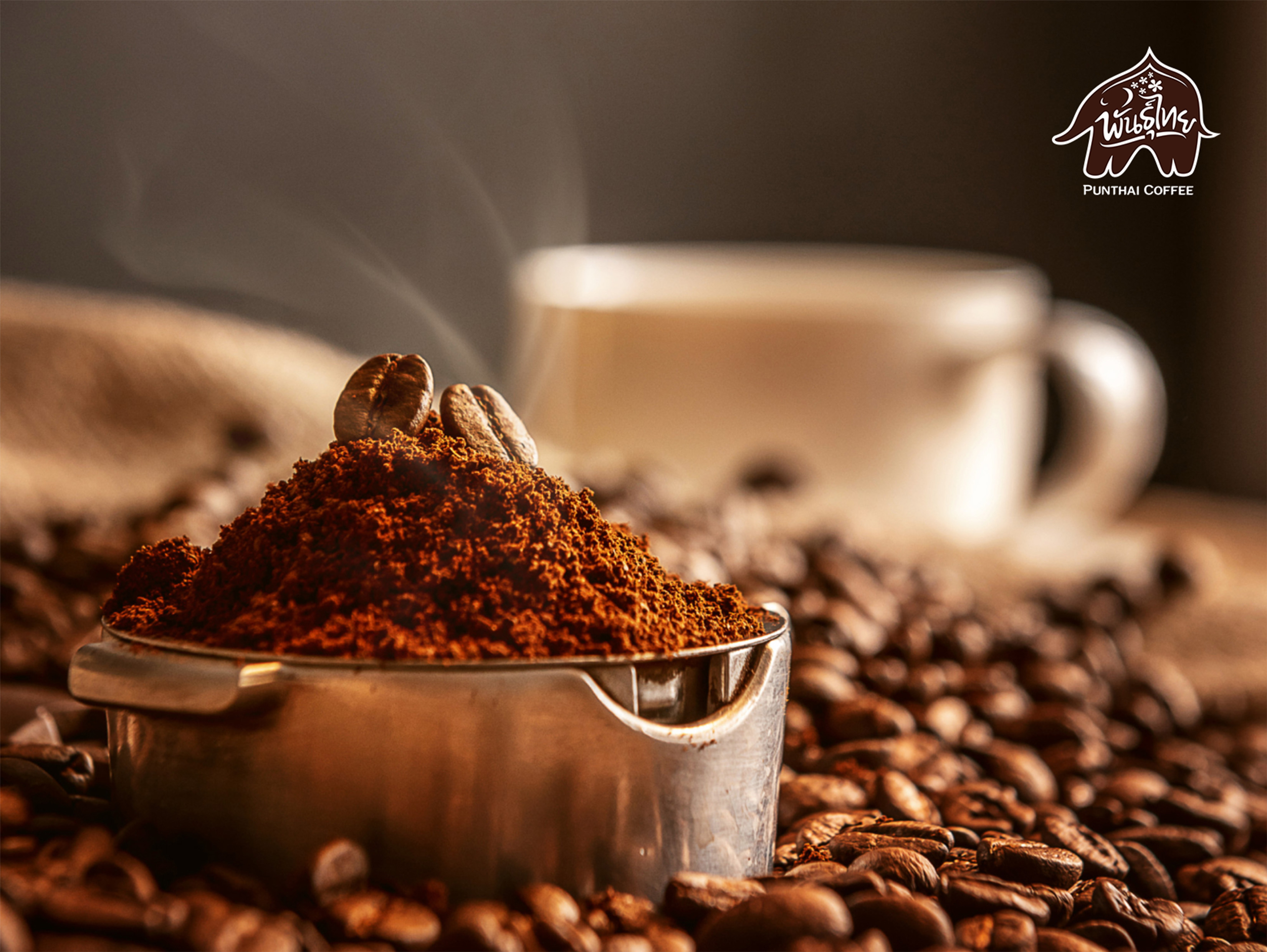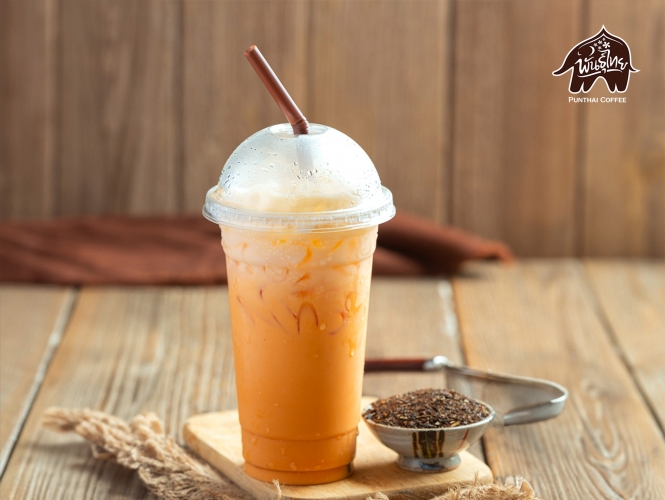
Unveiling the Rich Essence: The World of Arabica Coffee Beans
So, when it comes to coffee, most of us coffee buffs have heard about "Arabica coffee beans" and "Robusta coffee beans," right? They're like the rockstars of the coffee world, loved by folks everywhere who enjoy a good cuppa. And hey, that includes us back home too! But have you ever wondered why Arabica coffee is such a hit with our taste buds? Well, today, we're gonna dive into the world of Arabica coffee beans, from where they come from to how we brew and enjoy them. Get ready for a journey into the land of rich aroma and unique flavors with PunThai!
History and Origin of Arabica Coffee Beans

Origin of Arabica Coffee Beans
Coffee beans are native plants of Abyssinia and Arabia, which according to history were discovered in the 6th century around 575 A.D. in Arabia. Some also say that Arabica coffee was discovered in Kaffa, which is a province in Ethiopia. So indigenous people named coffee after the province of its origin. Later, Arabica coffee beans began to gain prominence in Arabia and spread to other countries in Europe such as France, Italy, the Netherlands, and Germany, and eventually spread throughout the world.
Origin of Arabica Coffee in Thailand
As for the origin of Arabica coffee (C. Arabica) in Thailand, according to the records of the Italian Father Phrasanphol Khunphan, Arabica coffee beans were introduced for cultivation in Thailand around 1950 BE. Initially, there were problems with cultivation due to unsuitable conditions. Later, with the help of American coffee planting experts, they were able to successfully cultivate Arabica in the northern region, since this type of coffee favors cooler weather. Later in 1973, there was a project to grow substitute crops and develop the economy of Thai hill tribes, so there was promotion of planting substitute crops for opium poppies, including growing Arabica coffee as a substitute for opium and being able to generate good income for hill tribe farmers to this day.
7 Varieties of Arabica Coffee Beans

1. Typica
Typica is an Arabica coffee variety that can be grown in all regions and is the prototype variety used to develop other varieties. The Typica coffee tree has a main stem and side stems that lean outwards, with branches extending from the stem at an angle of about 50-70 degrees, giving the coffee tree a tall conical shape. Although the Typica tree has low yields, the coffee beans produced are of high quality with excellent flavor.
2. Bourbon
Bourbon is an Arabica coffee with various sub-strains, much like Typica, which developed from Bourbon. This strain was initially developed by the French in 1708 on the Bourbon Island in the Indian Ocean. Bourbon plants have broader leaves and larger cherries than Typica. The tree shape is also conical, similar to Typica, but Bourbon can yield up to 20-30% more and has a smoother taste.
3. Caturra
This coffee strain was discovered in Brazil and named after the city where it was found. Caturra is a modified strain derived from Bourbon. While it was discovered in Brazil, Caturra thrives best in Colombia and southern America. It produces bright-tasting roasted Arabica coffee, with wider leaves and more pronounced edges than Bourbon. Despite yielding higher than Bourbon, Caturra has a milder taste and requires more careful attention.
4. Mundo Novo
A hybrid strain created around 1940 by crossing Bourbon and Typica, Mundo Novo is an Arabica variety known for its high yield and resistance to various diseases. Harvesting this strain typically takes longer than others.
5. Catuai
A cross between Caturra and Mundo Novo, Catuai plants are characterized by their short, dense stature. They yield well but require careful maintenance and high-quality fertilizer. This strain produces cherries in yellow or red and has a flavor resembling fruits.
6. Blue Mountain
This Arabica variety is grown in Jamaica and is a sub-strain of Typica. It stands out for its resistance to coffee leaf rust and thrives in high-altitude regions. It's predominantly grown in the Blue Mountains, hence its name.
7. Geisha/Gesha
Just the name alone signifies prestige. This Arabica variety is highly sought after in the market. Geisha/Gesha beans are elongated with a slightly pointed tip, and their branches near the top are more slanted compared to other strains. The ripe beans offer a distinct taste and aroma, with pronounced fruity and floral notes.
Distinctive Characteristics of Arabica Coffee
1. Seed Characteristics
Arabica coffee beans are typically round to slightly oblong in shape and have a brownish hue.
2. Cultivation
Due to Arabica coffee plants being relatively delicate, they are typically grown at elevations of 800 meters above sea level or higher. They thrive in cool climates with high humidity.
3. Flavor
Roasted Arabica coffee offers a diverse and complex range of flavors, ranging from smooth and mellow to bittersweet or tangy. Many liken its taste to that of berries.
4. Caffeine Levels
It may come as a surprise that Arabica coffee generally has lower caffeine levels compared to other varieties. On average, Arabica beans contain only about 1.2-1.5% caffeine.
10 Benefits of Drinking Arabica Coffee
1. Helps prevent heart disease by reducing cholesterol levels in the bloodstream.
2. Reduces the risk of Alzheimer's disease.
3. Combats fatigue, making it a popular energy booster.
4. Lowers the risk of certain cancers.
5. Alleviates migraine headaches.
6. Reduces inflammation and the risk of developing gout.
7. Prevents and relieves asthma symptoms.
8. Guards against Hepatitis B.
9. Drinking brewed Arabica coffee can help lower blood sugar levels.
10. Increasing exercise performance with caffeine intake of 3-6 milligrams per kilogram of body weight can enhance endurance and stamina during various forms of exercise.
Proper Brewing and Consumption of Arabica Coffee
Brewing Arabica Coffee
There are various methods to brew Arabica coffee to maintain its full-bodied flavor. Drip brewing is a popular choice for its ability to extract bold flavors while retaining smoothness and aroma. The technique may vary, but drip brewing is favored for its consistent results and ease of use.

Simple Drip Coffee Recipe
1. Grind Arabica coffee beans to your preferred fineness.
2. Boil water to 92-95 degrees Celsius for a balanced and non-bitter taste.
3. Place a filter paper in the drip brewer and rinse it with a small amount of hot water to remove any paper taste.
4. Add the ground coffee to the center of the filter paper.
5. Pour water evenly over the coffee grounds, starting from the center and spiraling outward. Repeat for 30-45 seconds.
6. Increase the pouring speed for the first minute, then slow down for the second minute.
7. Continue to drip coffee slowly until 2-3 minutes have elapsed, allowing all the water to pass through.
8. Serve the brewed coffee and enjoy.
Consuming Arabica Coffee
Arabica coffee, known for its rich yet smooth flavor, is suitable for various hot coffee recipes like cappuccinos, lattes, and mochas. Its mild taste enhances the drinking experience, making it ideal for both black and milk-based beverages. Additionally, Arabica coffee can be used to create refreshing iced coffee beverages, offering a unique and enjoyable flavor profile.
4 PunThai Arabica Coffee Drip to Try!

1. Dark Wood
A deep, intense roast boasting flavors of dark chocolate with subtle hints of nuttiness and red sugar, reminiscent of an adventurous journey through the woods.
2. Cedar Forest
A medium roast featuring the fresh, invigorating aroma of pine and herbs, complemented by notes of chocolate and red sugar, evoking the feeling of a serene stroll through a lush forest.
3. Tropical Fresh
A sweet, fruity medium roast with hints of pineapple and caramel, offering a refreshing and vibrant taste experience akin to exploring a tropical paradise.
4. Creamy Hills
A medium to dark roast with a velvety smooth texture and flavors of almonds and caramel, providing a comforting and indulgent coffee-drinking experience reminiscent of a cozy hillside retreat.
Once you get to know Arabica coffee beans, you fall in love with them, don't you? Even though there are many different types of Arabica coffee beans, each Arabica variety has its own distinct characteristics. Especially PunThai Arabica coffee which emphasizes blending harmoniously with local coffee varieties grown in Thailand. Such as PunThai Arabica roasted coffee beans and Arabica drip coffee. This makes our Arabica coffee have a full-bodied coffee flavor, yet it's also smooth on the tongue with a unique roasted coffee aroma. For those who love coffee, you can follow great tips about coffee and PunThai coffee on PunThai’s Blog, or grab a cup of coffee, just order on PunThai Coffee website. Coffee lovers will definitely love it!
Reference:
https://research.hrdi.or.th/public/upload/fj11zku0i6.pdf
https://www.coffeeam.com/pages/different-types-of-arabica-coffee
https://www.aromathailand.com/arabica-and-robusta-differences/
https://www.doiwhan-cnx.com/article/6/%E0%B8%AA%E0%B8%B2%E0%B8%A2%E0%B8%9E%E0%B8%B1%E0%B8%99%E0%B8%98%E0%B9%8C%E0%B8%81%E0%B8%B2%E0%B9%81%E0%B8%9F%E0%B8%AD%E0%B8%B2%E0%B8%A3%E0%B8%B2%E0%B8%9A%E0%B8%B4%E0%B8%81%E0%B9%89%E0%B8%B2



